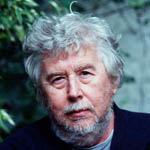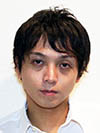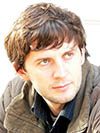Toru Takemitsu Composition Award
4 Finalists selected for Toru Takemitsu Composition Award 2013
[Judge: Harrison Birtwistle]
07 Dec, 2012
Sir Harrison Birtwistle, judge of the Toru Takemitsu Composition Award 2013, has chosen the following 4 orchestral works out of 97 entries from 28 countries eligibly accepted by 28 September 2013. Screening was done with the anonymous scores having only their titles. These four nominated works will be performed on 26 May 2013 at the Tokyo Opera City Concert Hall : Takemitsu Memorial for Mr.Birtwistle’s final judgement.
Here is the list of finalists in order of their entry.
Applications for 2013(PDF/283KB)
- Year 2013 Sir Harrison Birtwistle (United Kingdom)
-

© Hanya Chlala / Arena PAL
Finalists (in order of entry)
Huan Liu (China)
Zwei Landschaftsbilder
Born in Tangshan, China in 1983. She entered the music school attached Tiannjin Conservatory of Music to major in composition in 1999. She continued to study under Professor Qin Wenchen at Central Conservatory of Music (2002-2007 / Bachelor). In 2008, she entered at the University of Arts in Berlin-Germany (Diploma / Master), under Professor Walter Zimmermann. In 2010 – present, she got Meisterschülerin and continued her study under Professor Walter Zimmermann. Her works include chamber music, orchestra Music, film music and music for kids – which were performed and awarded in China, Holland, Germany and Egypt.

Sumio Kobayashi (Japan)
The Lark in Snow
Born in Mie, Japan in 1982. He received musical education, excelling with piano and composition, since 1985. He studied under Joji Yuasa and Hiroyuki Itoh. Received various prizes including the Music Competition of Japan, I.C.O.M.S. Concorso Internazionale di Composizione, Gyeongsangnam - do Special Prize at Isang Yun Prize, and International Composition Competition SYNTHERMIA. He was invited to festivals such as Takefu International Music Festival. He is writing for a wide variety of instruments and ensembles ranging from solo piano to large orchestra.

Nana Kamiyama (Japan)
"CLOSE" to you to "OPEN"
Born in Gunma, Japan in 1986. She graduated from Tokyo College of Music, and took a master’s degree in 2010. She won the 3rd prize at the Music Competition of Japan (2010). She became interested in music perception from a cognitive psychological perspective and has pursued experimental work through composition. Her work extends to the composition for traditional Japanese instruments and she currently studies Satsuma-biwa and Nagauta-shamisen. Her recent work includes AtrE for six Violas (2008) and “tOkyO” in the bOx for Orchestra (2010) among others. She studied composition under Reiko Arima, Akira Nishimura, and Toshio Hosokawa.

Marcin Stańczyk (Poland)
SIGHS - hommage à Fryderyk Chopin
Born in Łęczyca, Poland in 1977. Graduated from the Faculty of Law at the University of Łódź, and from the Academy of Music in Łódź, where he studied composition under Zygmunt Krauze. He also completed postgraduate studies at the Accademia Nazionale di Santa Cecilia in Rome under Ivan Fedele. He supplemented his education within CURSUS 1 at IRCAM in Paris. Received various prizes and scholarships and was recognized by different institutions including IMD Darmstadt, Reading Panel IRCAM, Royaumont, Jerwood, Laurentscantorij and Witold Lutosławski Foundations. Currently he is working on commissions from the Polish State and the Sinfonia Varsovia Orchestra as well as the Warsaw National Opera for season 2013/2014.
http://marcinstanczyk.com/

Aleksandra Chciuk
Comments for the Final / as a single judge
for the Toru Takemitsu Composition Award 2013
The adjudication of the Takemitsu Prize was one of the most difficult problems I have had to face. I have now been writing music for over 50 years and have completed more than 120 pieces and the more music I write the more subjective my response becomes. In fact my judgement of a piece is whether or not I would like to have written it. When I unwrapped two large cardboard boxes filled with 97 pieces of orchestral tutti a panic set in. How was I to approach the task with the maximum degree of subjectivity? The tactic I decided upon was
- Examine each piece for at least 15 minutes
- Reject the obvious non-runners
- Finalise and digest the rest over a period of time
- After a week or so make a shortlist of possible winners
The shortlist turned out to be 27 pieces. This was the most difficult task of the whole process. Of 27 pieces eighteen of them could be said to come from the same stable, namely – having dense static textures, slow tempo, quiet dynamics, super-imposed rhythmic unison expressed with often beautiful orchestration. I called them the “Rothko pile”. The 9 remaining pieces were individual and did not make a composite group. The Rothko pieces because of their similarity were the most difficult to deal with. I made a short list of them – 6 in one pile and 12 in another but the decision was difficult and gave me a lot of problems. Day after day I moved two scores from pile 2 back to the other, eventually settling on three possibilities. The other group of 9 was easier and I decided on 5 possibilities which gave me eight candidates to choose four winners from.
As a general observation I noticed that there was no evidence of anything expressed through rhythmic energy or a sense of melodic invention but the whole level of creativity was wonderful and gives me hope for the future of real music.
(In order of entry)
Zwei Landschaftsbilder
It is important that this complex work is processed into computer print so that readable orchestral parts can be extracted. From nearly 100 scores it stood out to me as the only piece that seemed to be directly related to the line of European 20th century modernism - Schoenberg, Webern, Boulez, Rhim etc. – but with an individual voice and an attitude to structure and orchestration not present in any of the other pieces being offered for the competition. It is the music’s narrative journey that interests me most, always moving in a direction not always anticipated in a fragmented logic and always redefining itself through an original use of the orchestra.
The Lark in Snow
A rich tapestry of a piece made from limited material expressed in a static gesture, rhythmically activated by the use of quiet dynamics, high register, slow tempo and a limited palette of strings and single flute. I look forward very much to hearing this brave piece and if the lark of the title is hidden in the snow I hope it flies to freedom in the spring of Japan 2013.
"CLOSE" to you to "OPEN"
A delicate and clear piece with an interesting idea regarding the role play of the piano and solo violin and the way the orchestra takes on this material and becomes both commentary and background. When listening to the music without noting the tempo marks I wondered in retrospect if they were not a shade too slow.
SIGHS - hommage à Fryderyk Chopin
An extraordinarily ambitious piece. I know of nothing like it. Maybe a piece I would like to have written or certainly like to hear. What attracts me is the simultaneity of the perspective of the ideas and the music’s invention from moment to moment expressed in a notation that is both free and exact at the same time. Controlling the perspective of the layers will be both a problem and challenge in realising the piece’s potential.
Harrison Birtwistle
November 30, 2012
Final Concert
15:00, Sun. 26 May, 2013
Tokyo Opera City Concert Hall: Takemitsu Memorial
[COMPOSIUM 2013]
Toru Takemitsu Composition Award 2013: Final Concert
Harrison Birtwistle, judge
Toshiyuki Kudo, conductor
Tokyo Philharmonic Orchestra
Contact us
Tokyo Opera City Cultural Foundation
3-20-2 Nishi-Shinjuku, Shinjuku-ku, Tokyo 163-1403 JAPAN
Tel. +81 3 5353 0770
Fax.+81 3 5353 0771